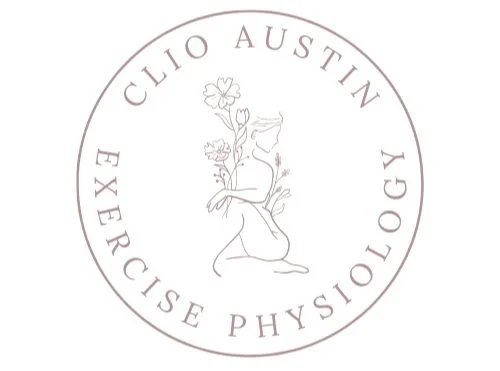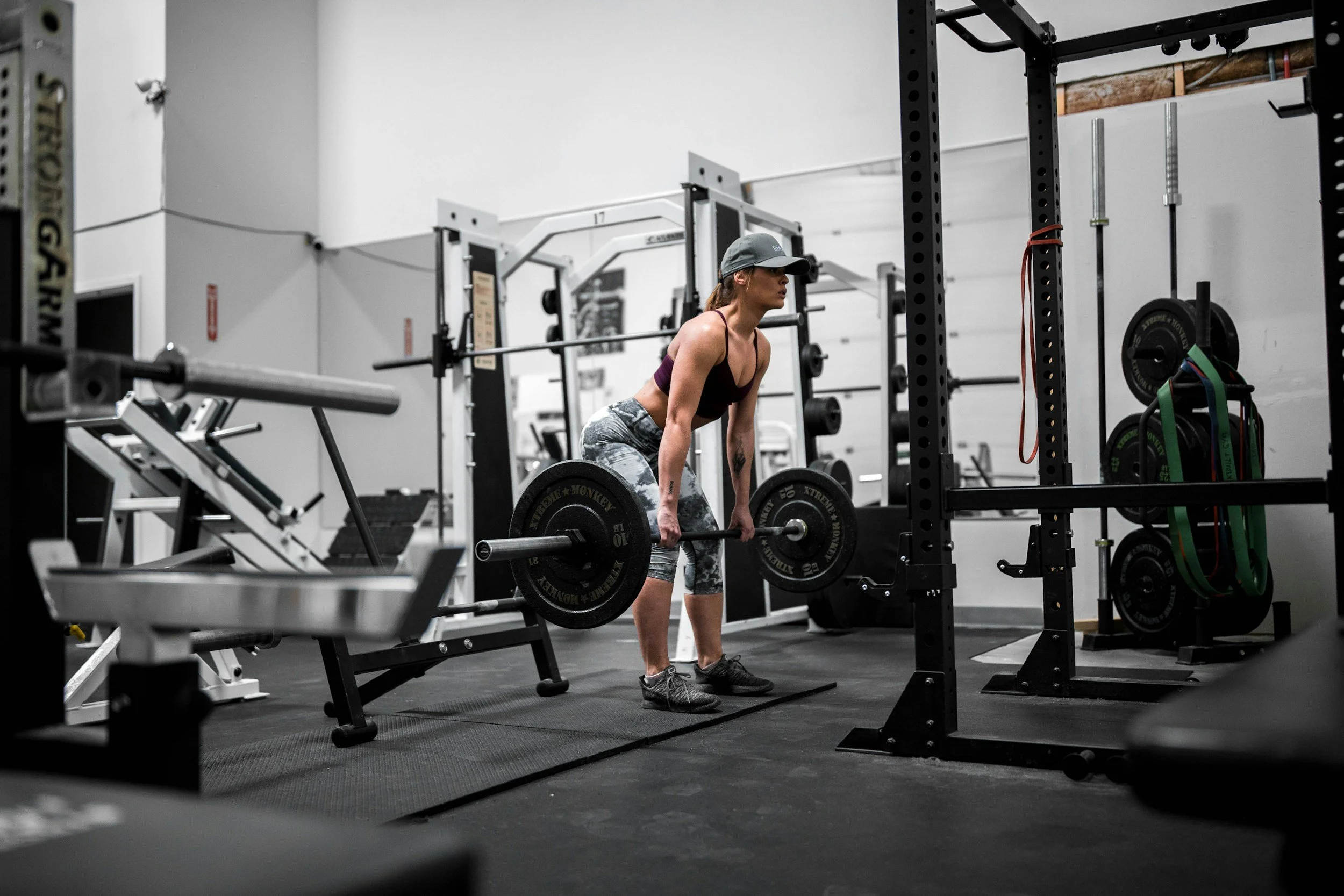How Resistance Training Transforms Women's Health During Perimenopause and beyond.
Navigating the waters of perimenopause can feel like embarking on a new and unfamiliar voyage. For women 35 and older, understanding the physiological changes that accompany this phase is crucial, particularly when it comes to maintaining muscle mass. This article aims to shed light on why gaining and preserving muscle is essential during perimenopause and beyond. We will specifically be looking at the benefits offered by resistance training regarding the management of vasomotor symptom, decreased lean muscle mass, increased adiposity (fat mass).
Some exciting and promising research demonstrates how resistance training can play a pivotal role in reducing the severity of hot flashes, night sweats, and other vasomotor symptoms commonly associated with perimenopause by regulating body temperature and stabilising hormonal fluctuations. Building lean muscle mass through consistent resistance exercises helps in metabolic health, boosts strength, and enhances daily functional abilities. This is especially important as muscle mass naturally declines with age, leading to sarcopenia (weakening and loss of muscle mass). Furthermore, reductions in adiposity (body fat) not only contribute to a leaner physique but also decrease the risk of developing various health conditions such as cardiovascular disease, insulin resistance, diabetes.
By incorporating regular resistance training sessions, women can also significantly lower their risk of falls, which become more prevalent as muscle strength and coordination decrease during aging. Overall, resistance training offers a holistic approach to maintaining overall health and well-being during perimenopause and beyond.
Understanding Perimenopause and Its Impact on Muscle Mass
Estrogen plays a crucial role in maintaining muscle mass, acting as both protective and anabolic (growth) for women. This hormone supports muscle repair, maintenance, and growth, thereby playing a pivotal role in sustaining physical strength and body composition. As women approach their mid-30s and enter perimenopause, the natural decline in estrogen levels can have a profound impact on these functions. This hormonal reduction can lead to increased muscle breakdown and a decrease in the synthesis of new muscle proteins, ultimately contributing to muscle mass loss. Such changes necessitate heightened attentiveness to maintaining muscle mass through lifestyle modifications, including resistance training and dietary adjustments.
The good news is that with a strategic approach, women can counteract the decline and support their physical health, staying strong and resilient as they transition through these critical years, particularly through self-education and enlisting the support of a women's health exercise physiologist, who can offer significant insights and support in navigating the complexities of perimenopause and beyond.
Vasomotor Symptoms
Vasomotor symptoms can manifest in various forms amongst individuals and can include one or more of the following: Hot flashes, night sweats, flushed skin, profuse sweating, increased heart rate, anxiety, heart palpitations, dizziness, chills, and disrupted sleep. A 2020 study by Woods et al, delved into the connection between lean body mass (LBM) and vasomotor symptoms (VMS), offering a fresh perspective on managing menopausal symptoms.
This research included a diverse group of women from across the United States, and highlighted that maintaining lean mass can provide a protective effect against the onset of VMS during menopause. These findings have significant implications given the ongoing hesitance towards hormone replacement therapy (HRT) for symptom relief. Now I am going to slightly sidetrack here to suggest that this is presumably in reference to the 2002 Women's Health Initiative (WHI) Hormone Therapy Trials, which had a profound impact on the perception of HRT. The initial outcomes suggested potential detrimental side effects, generating considerable fear among clinicians and the public. This in turn led to a significant decline in the use of HRT as a treatment for menopause symptoms. Despite subsequent research highlighting the benefits and safety of HRT for many women, the shadow of the WHI findings still lingers. As a result, a generation of clinicians and women remains hesitant to embrace hormone therapy. For more information on the pros and cons of hormone therapy, I encourage you to visit either the Australasian Menopause Society or Jeans Hailes, for some fabulous educational resources.
Now back to the study by Woods et al, which underscores the potential of resistance training programs in preventing symptoms by preserving LBM. The research points to maintaining lean body mass as the most effective strategy for reducing menopausal symptoms, presenting a promising non-hormonal approach for women navigating this life transition. But perhaps an even better outcome for women who can and choose to use a combined resistance training and hormonal replacement approach.
Decline in muscle mass
Sarcopenia, is characterised by age-related loss of lean muscle mass, including the wasting of fast twitch (that is your power) muscle fibres and a reduction in type II fibres (endurance). 'The European Working Group on Sarcopenia in Older People' defines sarcopenia as probable when low muscle strength is present, diagnosed with low muscle quantity or quality, and severe if accompanied by reduced physical performance. In their research article on The Musculoskeletal Syndrome of Menopause, Wright et al, concluded that potential interventions to mitigate muscle loss include nutritional measures such as protein and vitamin D supplementation, creatine intake, alongside resistance training. They particularly highlighted the significance estrogen plays in maintaining muscle mass and strength; its decline, particularly through menopause, contributes to rapid muscle loss and increased frailty. Menopausal Hormone Therapy (MHT), especially when combined with resistance training, showed potential for counteracting these effects by enhancing muscle mass and muscle strength.
Increased belly fat and inflammation
As women age, especially during and after menopause, they tend to gain weight around the middle. This can lead to higher levels of pro-inflammatory substances in the body. These play a role in causing or reducing inflammation in the body and have been linked to a range of health issues, such as insulin resistance, diabetes and heart disease.
In a study by Ward et al, they found that a 15-week supervised resistance training program for postmenopausal women, when followed diligently, significantly decreased levels of inflammation in the body. This suggests that resistance training might help reduce inflammation risks per the chronic health conditions previously mentioned.
Another review by Nunes et al, indicated that both low-volume resistance training and high-volume resistance training are beneficial strategies for decreasing menopause body fat, including total body and belly fat. Additionally, both types of resistance training were found to reduce metabolic risk and inflammation among overweight or obese postmenopausal and older women. These findings suggest that resistance training should be recommended in public health guidelines as a primary non-medicinal intervention for addressing obesity, metabolic risk, and inflammation issues.
In conclusion, resistance training emerges as a powerful tool for women navigating perimenopause and beyond, offering substantial benefits that extend to various facets of health and well-being. Through the promotion of lean muscle mass, this form of exercise not only mitigates the symptoms associated with perimenopause and menopause, such as hot flashes and night sweats, but also counteracts muscle loss and the risk of sarcopenia. Resistance training effectively reduces adiposity, contributing to a leaner physique and lowering the risk of chronic health conditions like cardiovascular disease and type 2 diabetes. Furthermore, the practice of resistance training offers a non-hormonal approach to managing menopausal symptoms, appealing to those who may be hesitant about hormone replacement therapy. By committing to regular sessions, women can strengthen their bodies, enhance their metabolic health, and safeguard against the deleterious effects of aging, thereby ensuring a higher quality of life during and after the transition through perimenopause.
If you're not sure where to start on your resistance training journey, please reach out to me via Instagram DM or email and I would be more than happy to help get started!
References:
Wright V, Schwartzman J, Itinoche R, Wittstein J. The musculoskeletal syndrome of menopause.
Woods R, Hess R, Biddington C, Federico M. Association of lean body mass to menopausal symptoms: The Study of Women's Health Across the Nation.
Isenmann E, Kalusza D, Havers T, Elbeshausen A, Geiser S, Hofmann K, Flenker U, Diel P, Gavanda S. Resistance training alters body composition in middle-aged women depending on menopause - A 20-week control trial.
Ward L, Nilsson S, Hammar M, Lindh-Astrans L, Berin E, Lindblom H, Spetz Hol A, Ruber M, Li W. Resistance training decreases plasma levels of adipokines in postmenopausal women.
Nunes P et al, Effects of resistance training volume on body adiposity, metabolic risk, and inflammation in postmenopausal and older females: Systematic review and meta-analysis of randomized controlled trials

